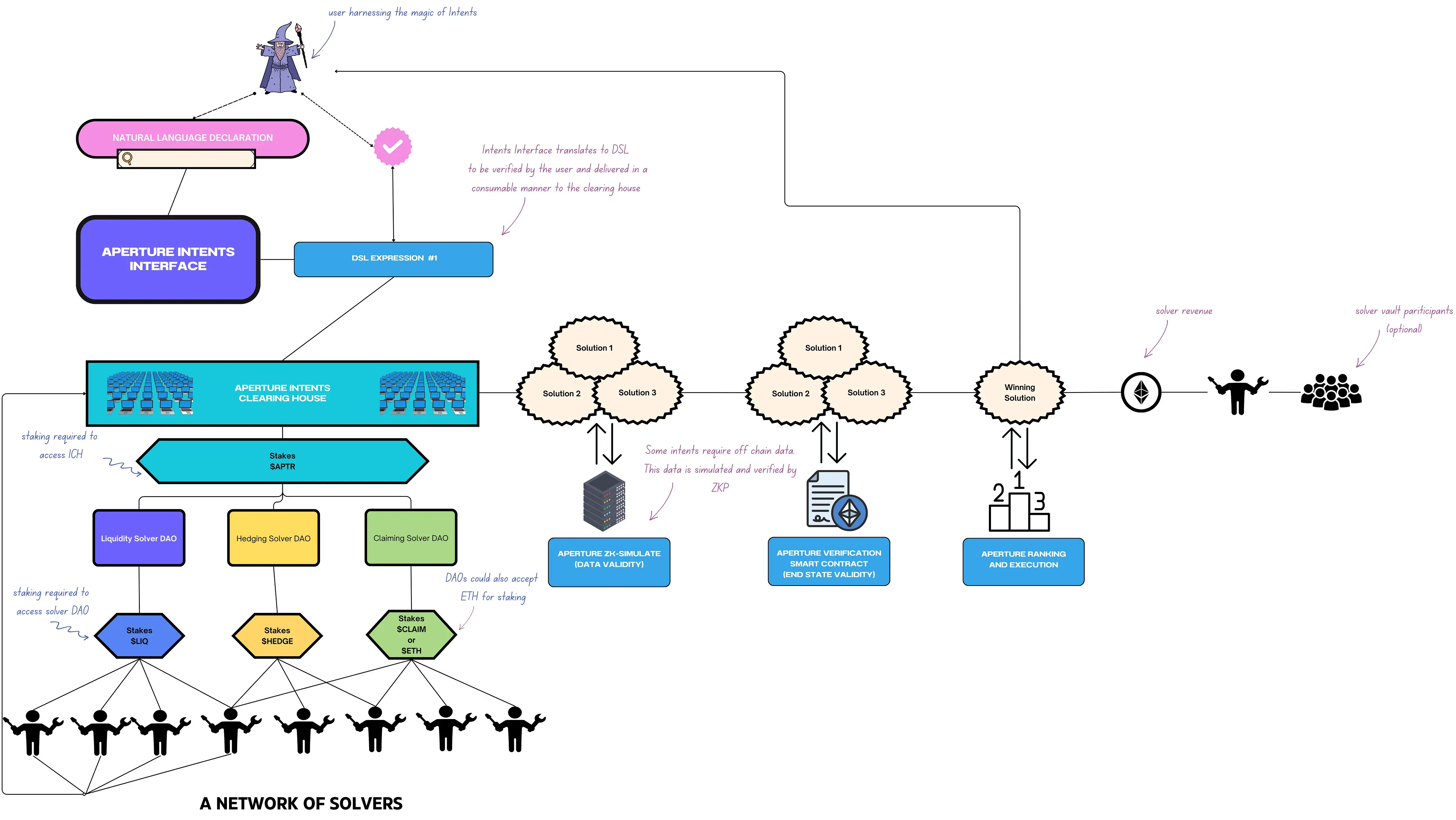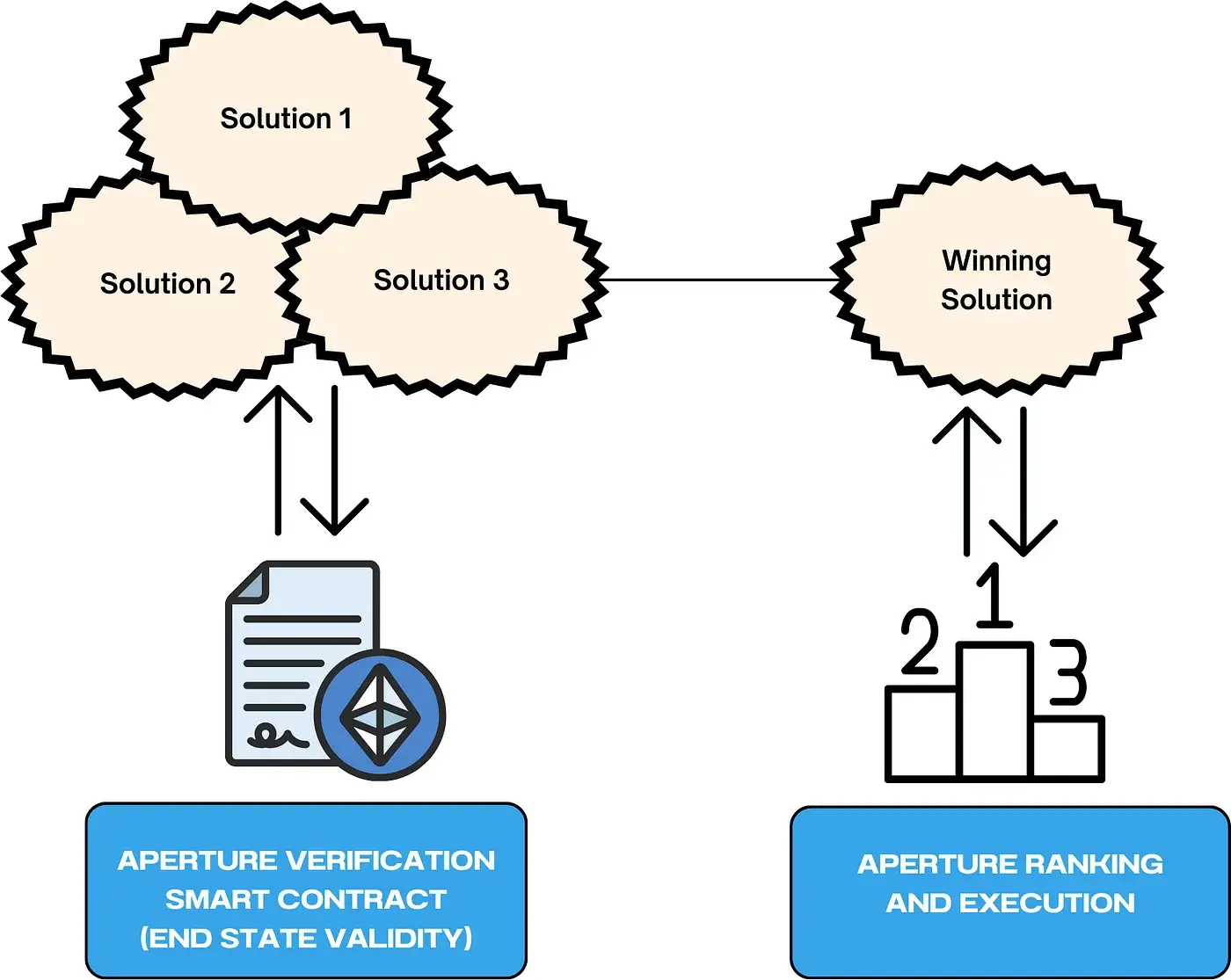Understand Aperture in one article: Give DeFi operation instructions to the chatbot
- WBOYWBOYWBOYWBOYWBOYWBOYWBOYWBOYWBOYWBOYWBOYWBOYWBforward
- 2024-03-14 19:16:021341browse
This article will mainly introduce Aperture and involve the growth difficulties currently faced by the DeFi industry.
Aperture’s goal is to challenge and transcend traditional transaction methods that once hindered the mass adoption of DeFi and move closer to an “intent-based” future.

In short: ten times the execution efficiency, one-tenth the workload
Aperture is developing a new chatbot experience, It relies on a powerful intent infrastructure that allows users to express their needs in natural language. By integrating a network of solvers, Aperture is able to provide services that are more efficient and cost-effective than traditional transaction methods. This new experience will bring more intelligent and personalized solutions to users, allowing them to achieve their goals more easily. At the same time, Aperture's underlying technical support system will ensure that users' needs are met promptly and accurately, thereby enhancing user experience and improving execution efficiency. By collaborating with the solver network, Aperture can provide users with more flexible and customized services, further improving user satisfaction. This innovative
User Experience: ApertureLLM powered by the Intent DSL
First, Aperture will start with the foundational condition for any mass adoption: user experience (UX).
DeFiUX currently focuses on transaction methods, requiring users to sign state changes at different levels of technical understanding, which also changes users' understanding of the "final state". Aperture puts the core of user experience on the "end state" through intention.
Through modern LLM and a dedicated intent-oriented programming language, Aperture is committed to improving users' ability to express intent. This will enable users to communicate their trading goals and preferences more clearly and effectively, making it easier and more accurate to harness the potential of blockchain.
For those users who don’t know much about the principles of blockchain technology, it may be confusing to encounter a lot of “knobs and buttons” on the traditional DeFi interface. In contrast, Aperture's approach is to let users express their intentions in natural language, which is obviously simpler and easier to understand. Behind this approach involves converting natural language into blockchain code, and this is where domain-specific languages (DSLs) come into play.
Unlike the GPL (General Purpose Language), which is applicable to a wide range of fields, DSL is a specialized computer language designed for specific application fields. The development and application of DSLs is critical to domain engineering and often involves developing new DSLs or adapting existing DSLs to more effectively describe problems and solutions within a specific domain.
In Aperture, the design of DSL focuses on human reading habits and language habits, which is crucial to supporting clear and intuitive expression of intentions. Other DSLs may prioritize aspects such as programming efficiency or machine-level optimization.
On Aperture, LLM allows users to express their intentions in natural language and feeds that intention back to the user in a highly readable DSL form, bridging the gap between technical functionality and user-friendly interfaces. This DSL can then be provided to the resolver as a "statement of truth" for that user.
Using a real-world analogy: the LLM to DSL translation user experience is similar to that of a customer placing an order at a pizza parlor over the phone. A customer might place an order in very colloquial terms: “Give me your largest, all-meat pizza.” The operator on the other end might respond to them with: “You want our carnivore pizza, XL? ?" It's easy for the user to understand this transition and agree: "Yeah, I don't know the name of it, but that's what I want."
On the chain, this interaction will be in a similar way conduct. Users may start by stating their ultimate goal -
"You can rebalance my ETH-GMXLPs so that it concentrates 80% of the funds in the best performing pool across all my EVM chains, Will the remaining 20% of LP funds be evenly distributed to the remaining pools?"
The analysis of DSL may be fed back to users——
●Eligible assets: Mainnet, Arbitrum and ETH-GMX trading pair on Avalanche;
●Allowed operations: bridging, removing liquidity, trading ETH or GMX, adding liquidity;
●Ultimate goal 1: According to APYVision Based on the data, rebalance the liquidity position and concentrate 80% of the eligible asset capital on the position with the highest spot annual interest rate;
●Ultimate goal 2: Rebalance the liquidity position and concentrate 20% of the eligible asset capital Concentrate on existing unused capital pools in Final Goal 1;
●Sign the Statement of Intent (if correct).
Converting the LLM codifies the spoken language into standardized terminology for the DSL, which solvers utilize in a predictable and replicable way.
Underlying infrastructure
The intent infrastructure can be broken down into several parts:
●Intent clearing center (memory pool): Acts as a preliminary staging area for user intentions. It is designed to efficiently organize these intents for processing, using a prioritization algorithm based on various criteria such as urgency and resource requirements. The clearing house ensures that intentions are managed securely and orderly before they are submitted to the blockchain.
●ZK simulation of data validity: This is the resource needed to verify certain intentions and their corresponding solutions, which will rely on off-chain data. Zero-knowledge proofs can be used to verify the validity of this data. Utilizing advanced encryption tools such as Brevis or Axiom, Aperture can generate ZKPs for historically on-chain data that are part of the solution proposer's proposal. This approach allows for rigorous validation of the solution’s output, ensuring that it is accurate, complete, and conforms to specified constraints and intent, without compromising the confidentiality of transaction data.
● Validation Smart Contract: Each intended use case will require a smart contract to simulate, validate and govern the proposed solution.
● Ranking and Execution Engine: Each set of validated intents needs to be ranked based on results and solver scores, and then subsequently executed. The key aspect of this execution engine is its accountability execution capabilities. If any malicious activity occurs, such as reversed transactions or other malicious events, the execution engine is designed to punish the responsible resolver by reducing rewards or other means. This not only protects the integrity of the transaction, but also prevents potentially malicious behavior by the solver.
Application layer: SolverDAO
The SolverDAO network is a unique application layer built on the intent infrastructure. Aperture intent infrastructure enables SolverDAO to focus on enabling and solving unique intent-based use cases without worrying about underlying execution requirements.
SolverDAO gains access to user intent in Aperture Clearinghouse by staking the necessary amounts of $APTR and $ETH. SolverDAO can be associated with a large professional solver with proprietary solutions or a network of smaller solvers.
New intent solutions can come from Aperture or third-party SolverDAO. Solver DAOs add value by enabling new intent use cases. This requires submitting the necessary business logic to accommodate Aperture's modular design. Once built, the use case can now be "claimed" from the Aperture intent interface or a third-party interface created by the solver DAO.
ApertureDAO will provide $APTR funding to SolverDAO to enable new intent use cases.
How will Solvers compete, and what types of Solvers might exist?
Onchain vs. Offchain
In the highly competitive Aperture intent ecosystem, Solver stands out through his approach to releasing solutions. Although not mandatory, smart contracts are preferred due to their scalability and speed. However, off-chain scripts are equally good at releasing solutions quickly, providing an alternative path. Some declared intents may even have traits that enable solvers to submit solutions manually. (For example, the seller wants to schedule a large OTC deal and sets a 3-day bidding window.) Generation method solvers, they can avoid using smart contracts to generate solutions and instead can rely on Aperture’s zero-knowledge verification process to establish trust in their off-chain script-enabled solutions. This will enhance the positive cycle effect of attracting solvers (sustainable business solutions, attracting more revenue, attracting more solvers).
Solver Library
Although not explicitly required in a given ecosystem, Solvers may also choose to raise deposits through crowdfunding, using a vault mechanism to provide a share of the solver's earnings. part in return. Each Solver DAO can open source a reward sharing vault contract for its solvers to implement (if they wish to receive initial funding support).
Example: Intent to Airdrop
For ease of understanding, take the “airdrop claim intention” proposed by Aperture in the first blog post as an example. How do users declare intent? How does a dedicated SolverDAO leverage Aperture's SolverDAO marketplace?
The user first declares in natural language:
"Claim all eligible airdrops on my behalf. Don't forget the gas fees associated with claiming. In exchange, pay 1% or more Less fees."The chatbot may ask clarifying questions to further tease out the user's statement.Once this clarification is complete, the intent is translated from natural language into an encoded intent DSL and sent back to the user in a readable format for verification. Next, the expression of intent is published to the intent clearinghouse, where any eligible solver can view the user's statement.
Solvers can now view a user's address and cross-reference it with claimable airdrops or rewards. The permission function supported by the Account Abstraction Wallet allows solvers to claim airdrops on behalf of users. Solvers will compete against each other on "finder fees" and their overall knowledge of the airdrop. Now, the difference in intention is that if solver A covers a Dymension airdrop and solver B covers a Celestia airdrop, both solvers can earn discoverer fees from our users.

All proposed solutions will be simulated by Aperture’s smart contracts to verify the proposed results, and then all verified solutions will be ranked. Aperture will then execute on behalf of the user, returning all airdrops.
The above is the detailed content of Understand Aperture in one article: Give DeFi operation instructions to the chatbot. For more information, please follow other related articles on the PHP Chinese website!

